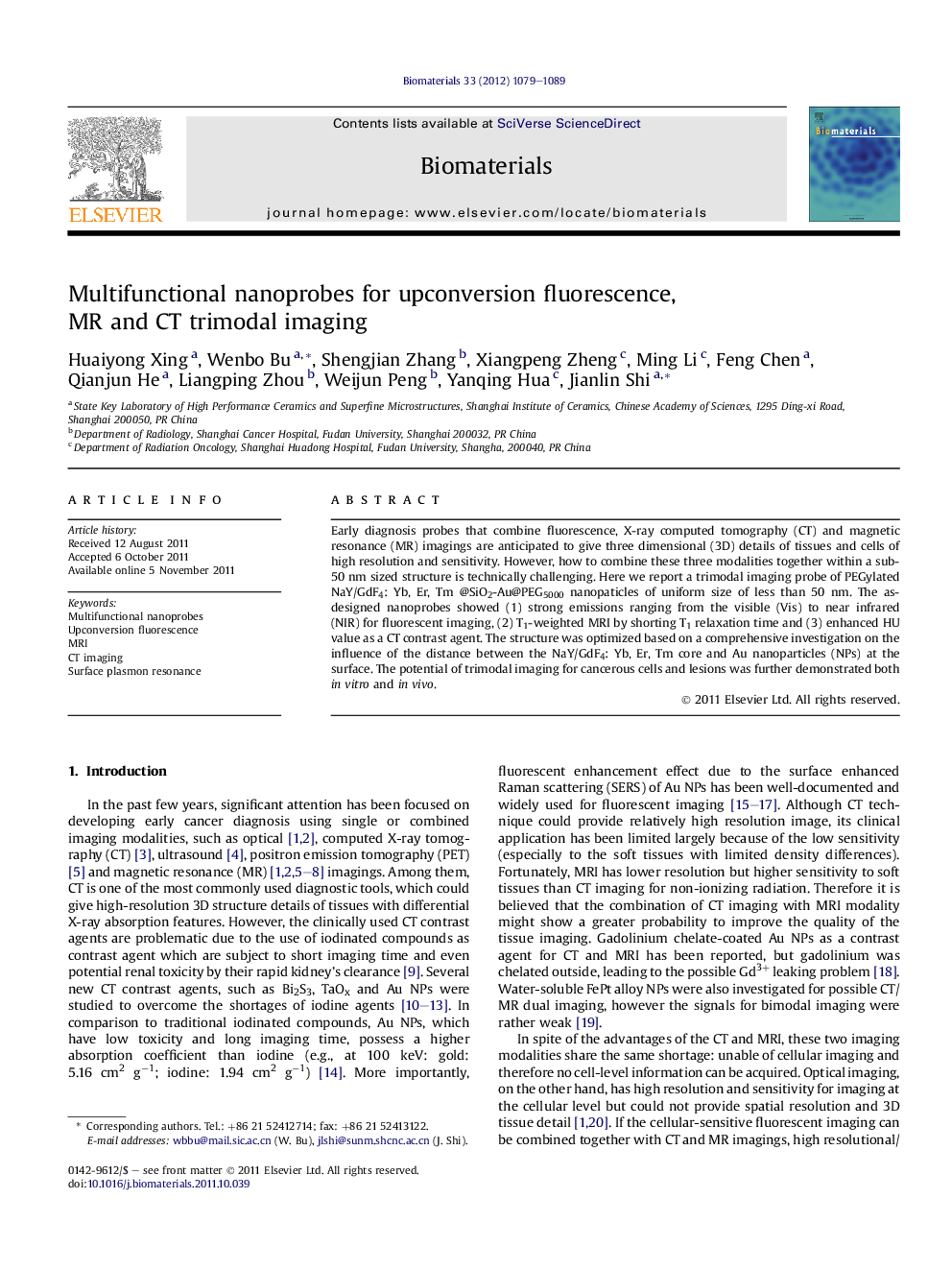| Article ID | Journal | Published Year | Pages | File Type |
|---|---|---|---|---|
| 10229420 | Biomaterials | 2012 | 11 Pages |
Abstract
Early diagnosis probes that combine fluorescence, X-ray computed tomography (CT) and magnetic resonance (MR) imagings are anticipated to give three dimensional (3D) details of tissues and cells of high resolution and sensitivity. However, how to combine these three modalities together within a sub-50 nm sized structure is technically challenging. Here we report a trimodal imaging probe of PEGylated NaY/GdF4: Yb, Er, Tm @SiO2-Au@PEG5000 nanopaticles of uniform size of less than 50 nm. The as-designed nanoprobes showed (1) strong emissions ranging from the visible (Vis) to near infrared (NIR) for fluorescent imaging, (2) T1-weighted MRI by shorting T1 relaxation time and (3) enhanced HU value as a CT contrast agent. The structure was optimized based on a comprehensive investigation on the influence of the distance between the NaY/GdF4: Yb, Er, Tm core and Au nanoparticles (NPs) at the surface. The potential of trimodal imaging for cancerous cells and lesions was further demonstrated both in vitro and in vivo.
Related Topics
Physical Sciences and Engineering
Chemical Engineering
Bioengineering
Authors
Huaiyong Xing, Wenbo Bu, Shengjian Zhang, Xiangpeng Zheng, Ming Li, Feng Chen, Qianjun He, Liangping Zhou, Weijun Peng, Yanqing Hua, Jianlin Shi,
